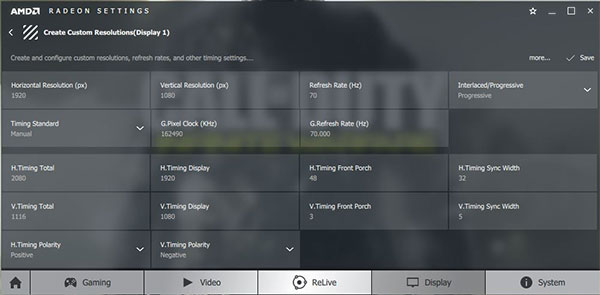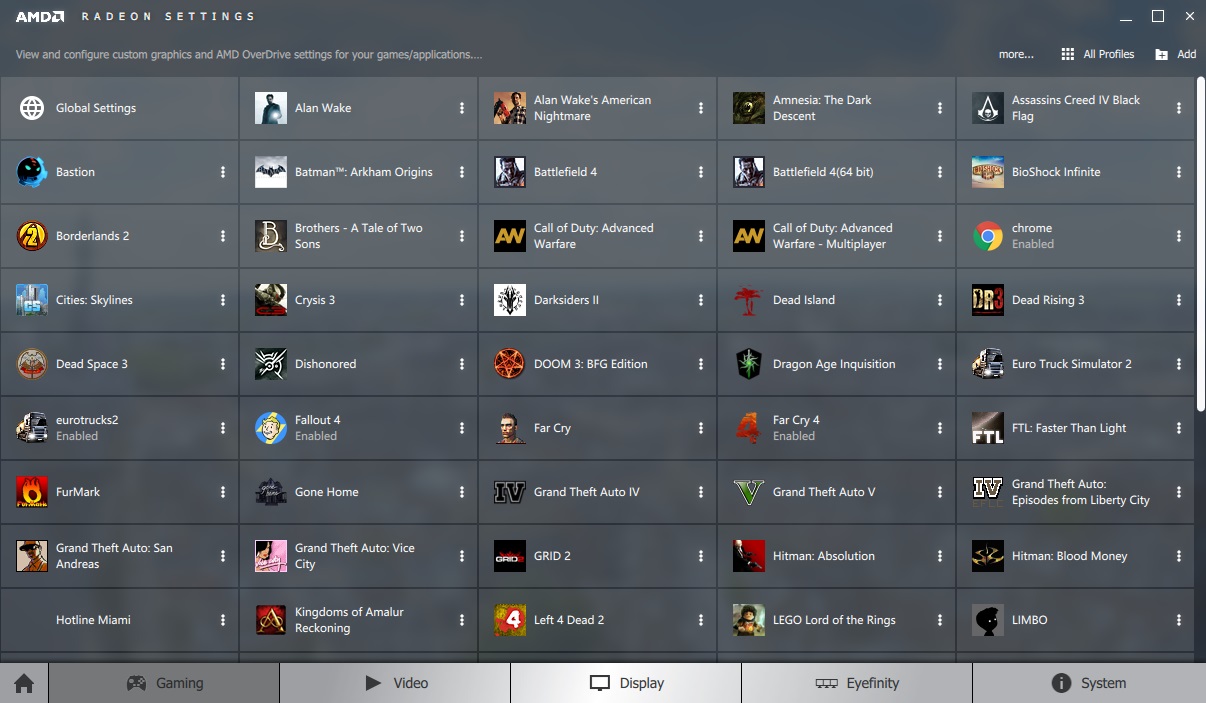

AMD RADEON SETTINGS REFRESH RATE WINDOWS
However, it was quite straightforward to display and choose the refresh rates not supported by the monitor in its Windows settings. With the 23.976 fps sample, we were looking at more than 15 minutes before a dropped frame, while, for the 24 fps sample, we were looking at more than a hour before a frame repeat.īy default, modes not reported in the EDID were not available in the CCC settings. Using madVR, we were able to judge how often a frame would get repeated or dropped in the renderer due to the mismatched refresh rate and frame rate.

The only exception was 60 Hz (which definitely works well in the usual desktop mode, but, was one for which we were unable to obtain a sample file with a matching frame rate). With the Sony Bravia KDL46EX720 (the new display in our HTPC testbed) being capable of PAL refresh rates (despite not exposing it in the EDID), we were able to test out almost all the above mentioned refresh rates. Some users demand integral multiples of 23.976 / 24 Hz because they result in a smoother desktop experience, while also making sure that the source and display refresh rates are still matched without repeated or dropped frames. Ideally, a GPU should be capable of the following refresh rates at the minimum:

Combined with the lack of reliable support for open source software, this has often pushed users to opt for a discrete HTPC GPU. One of the drawbacks of the GPUs built into the Intel CPUs was the lack of a 23.976 Hz refresh rate to match the source frame rate of many videos.


 0 kommentar(er)
0 kommentar(er)
